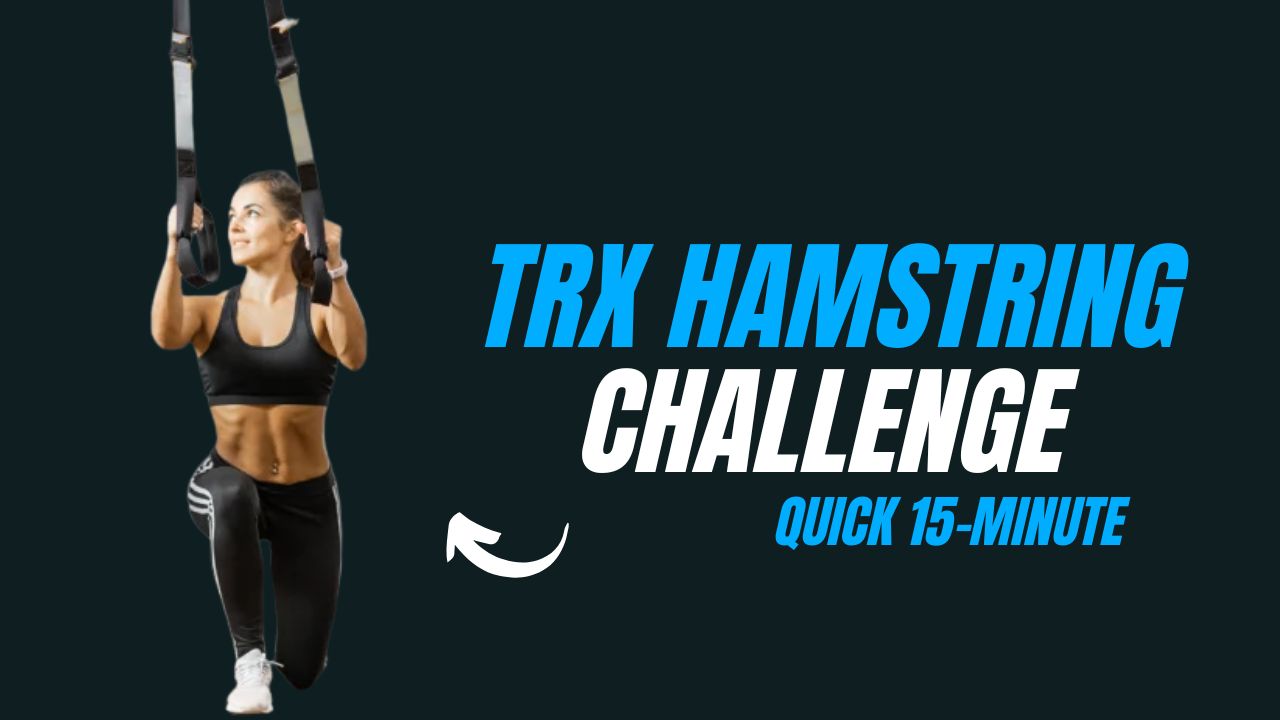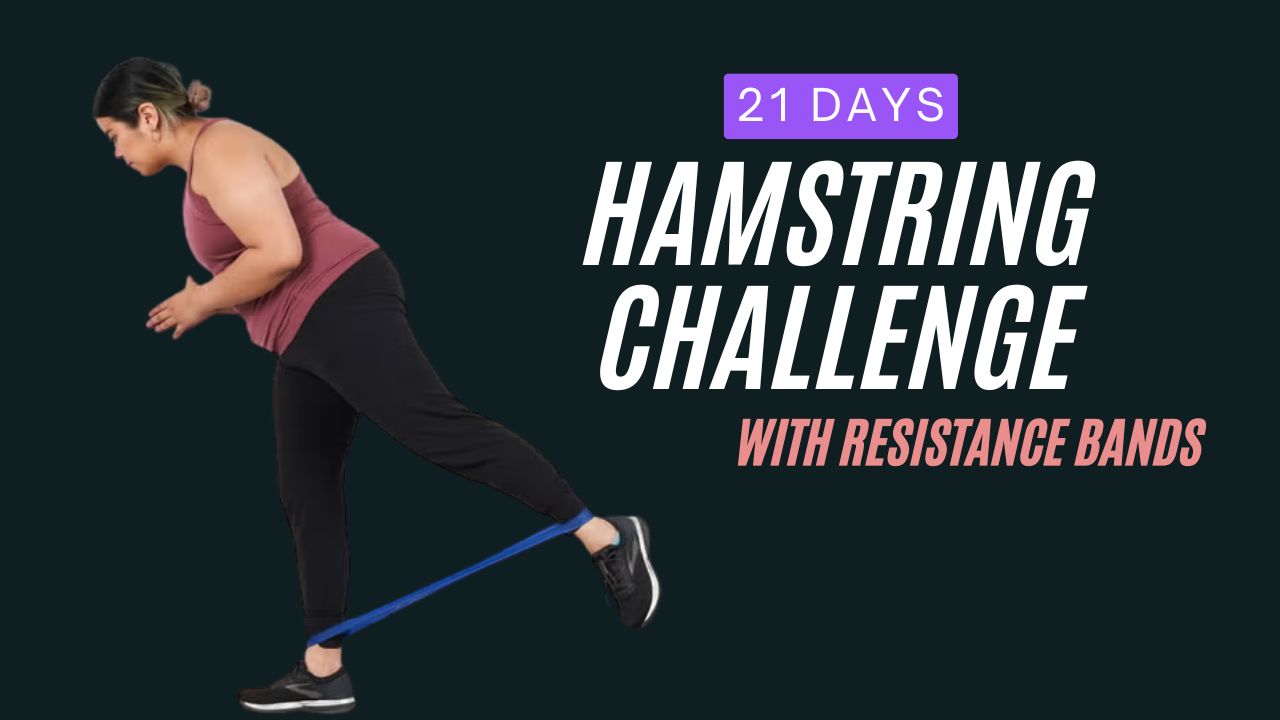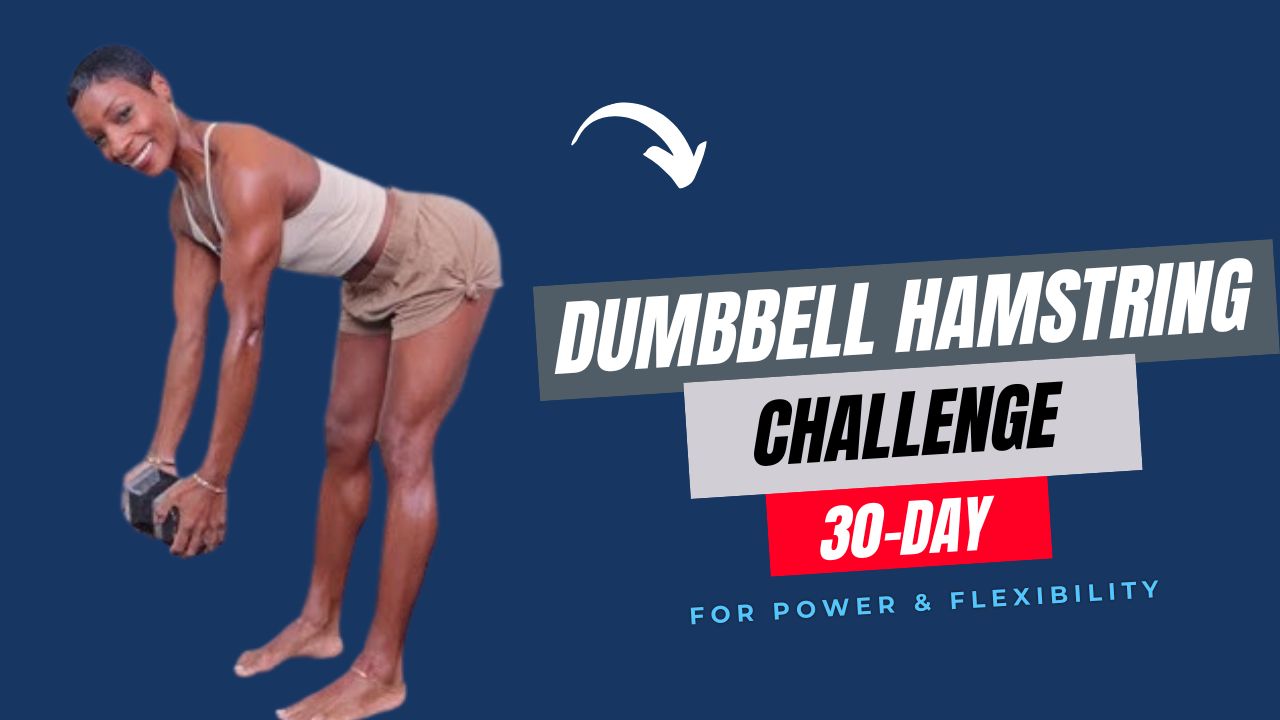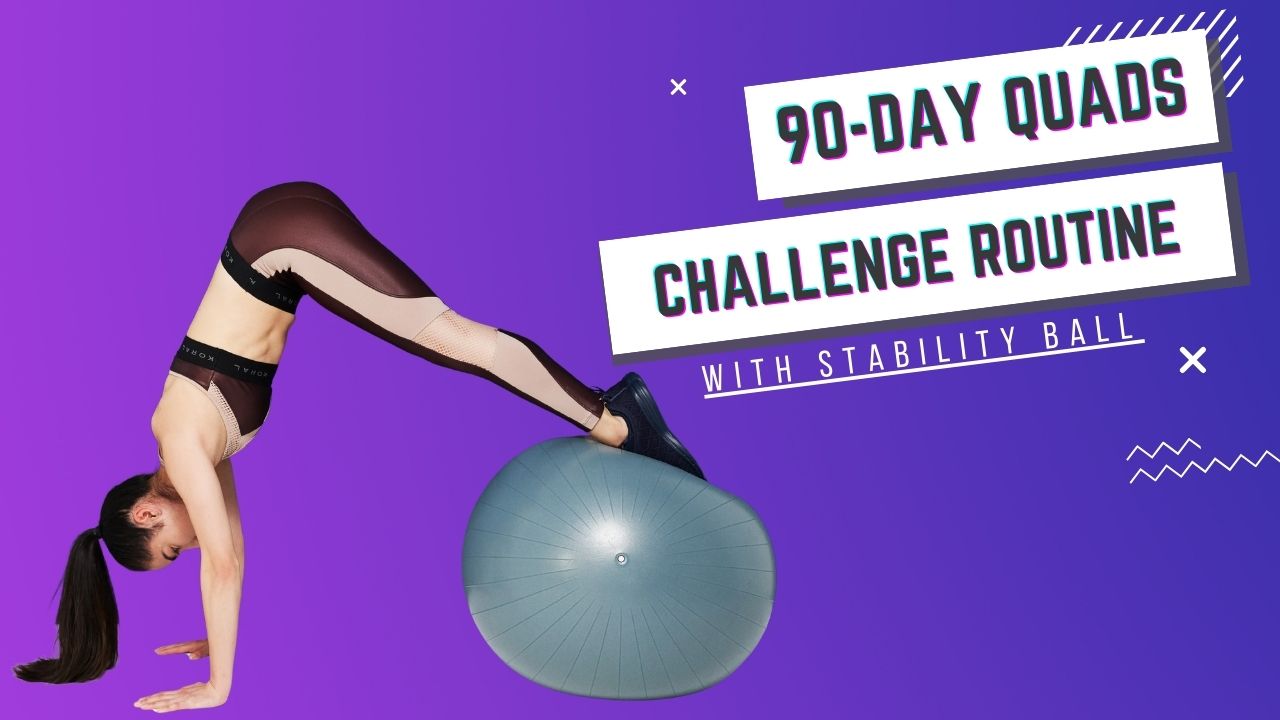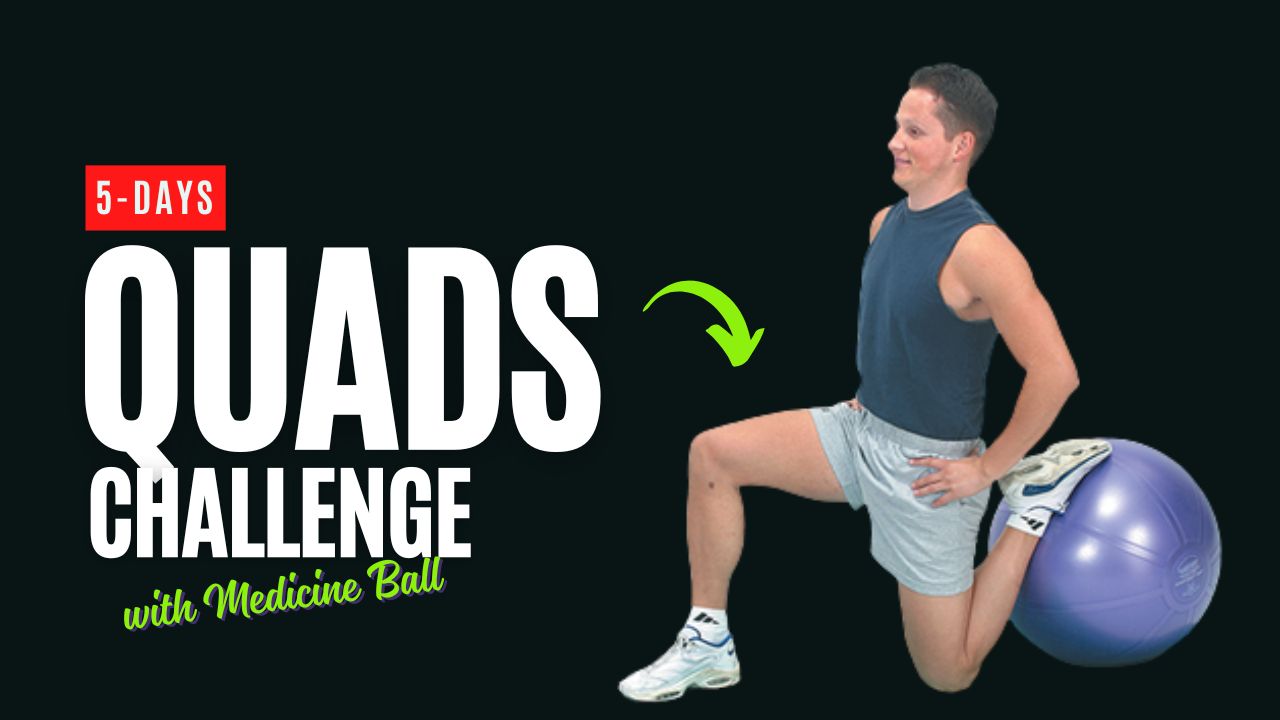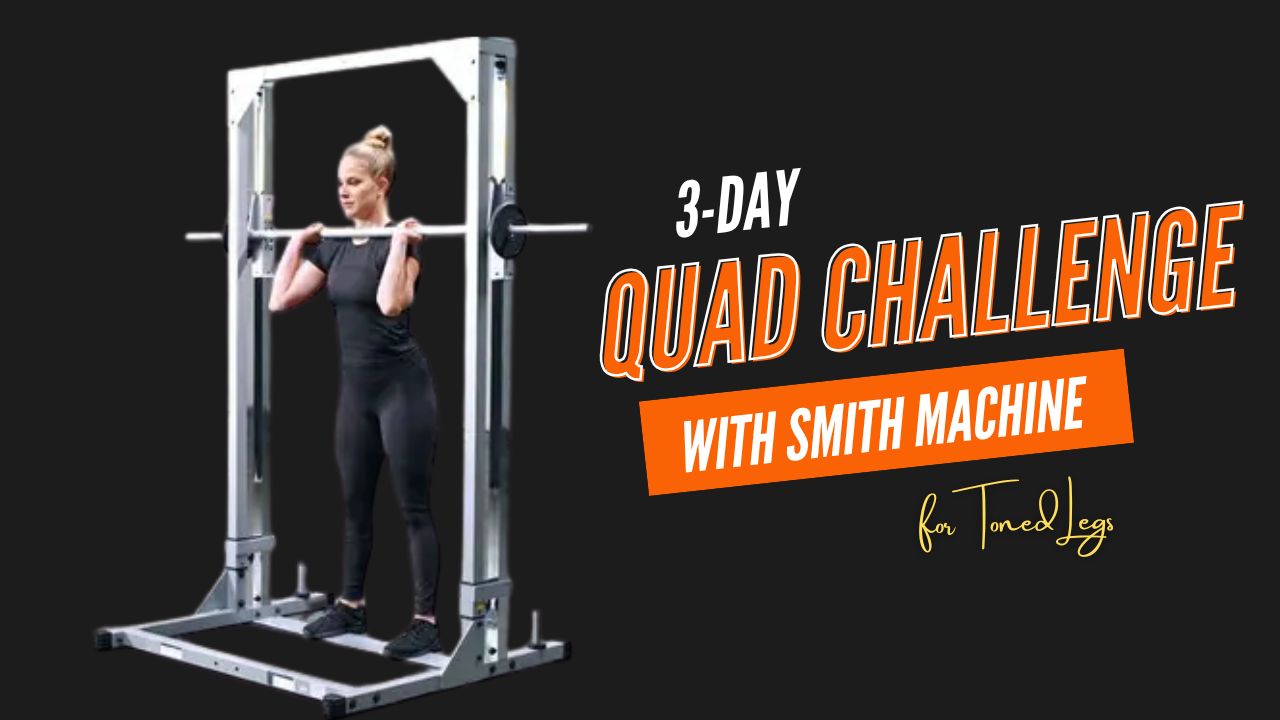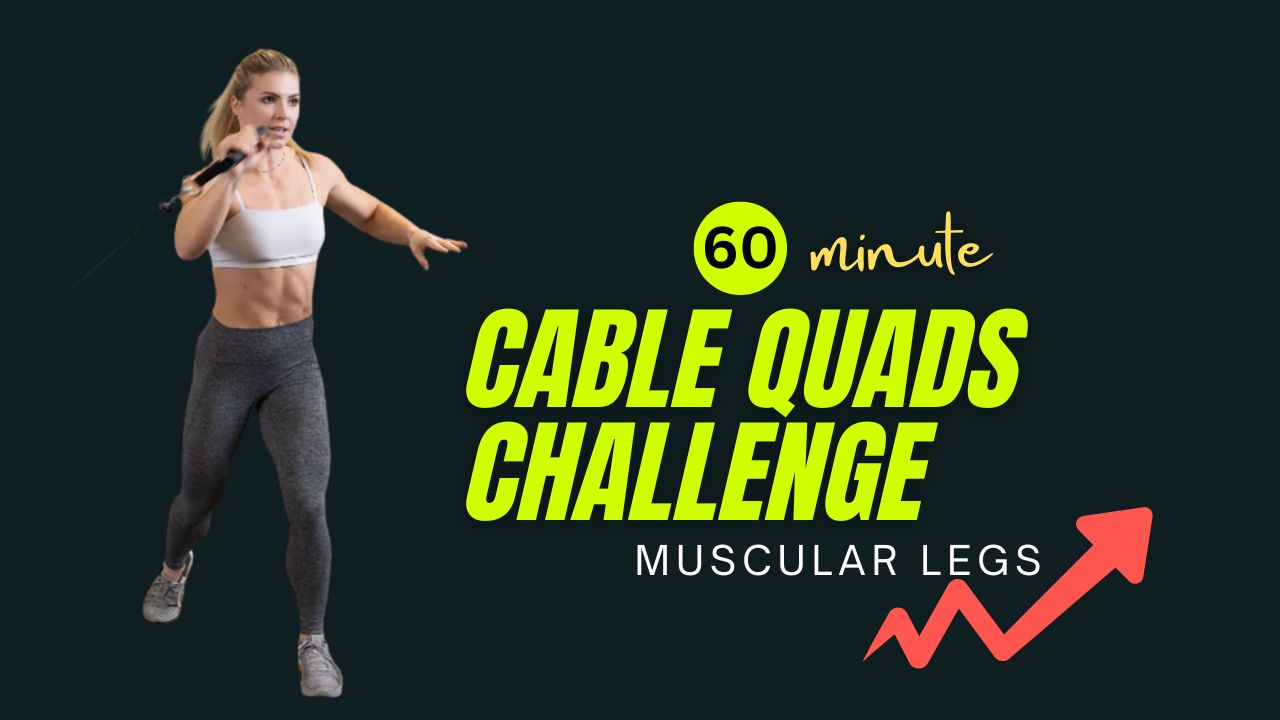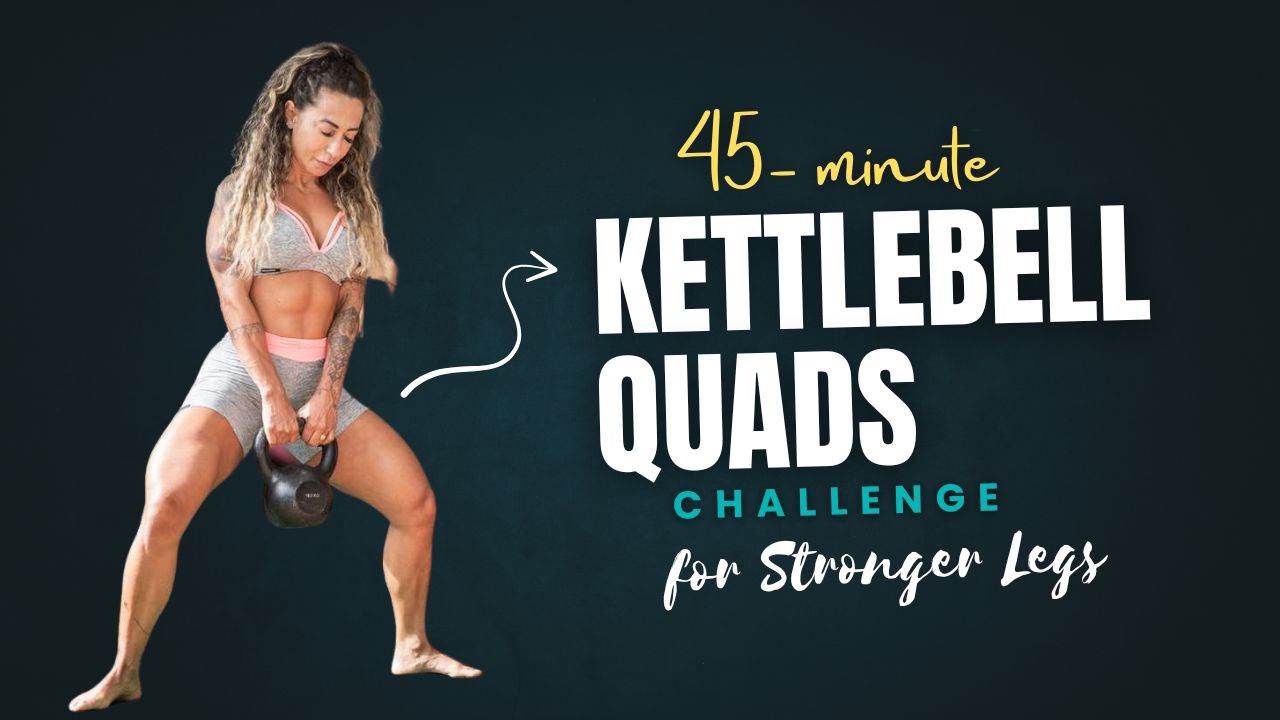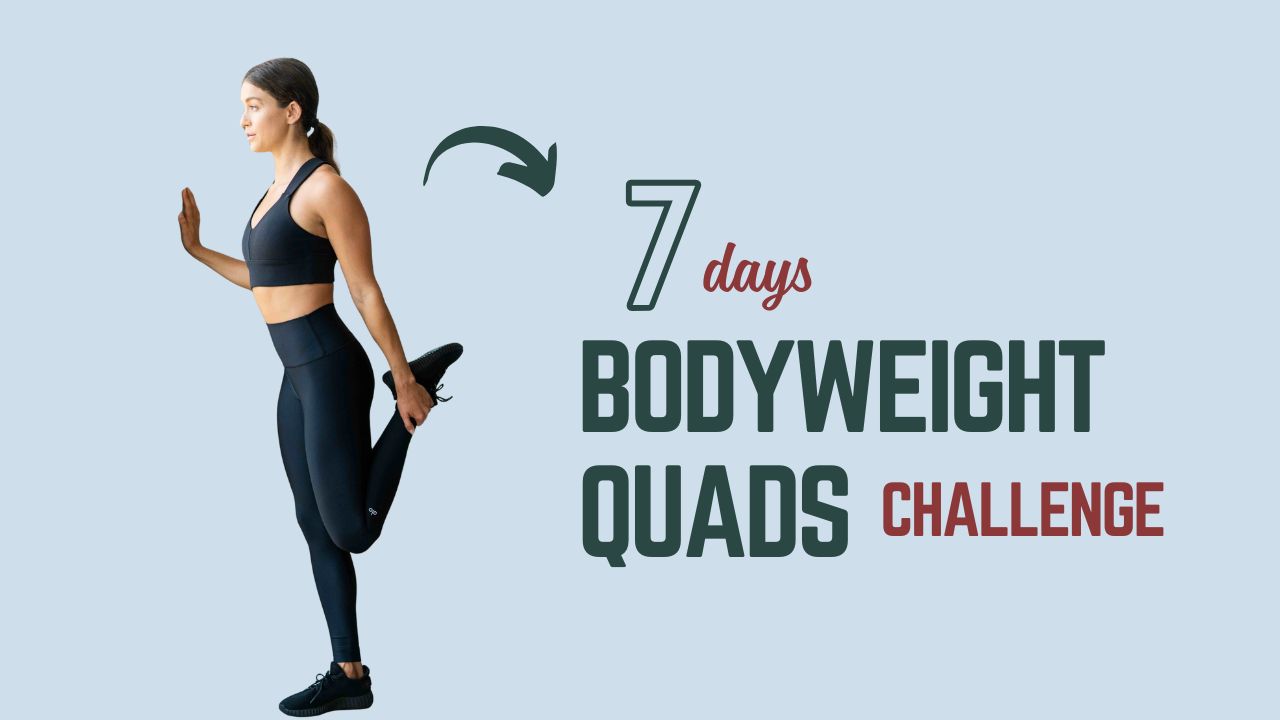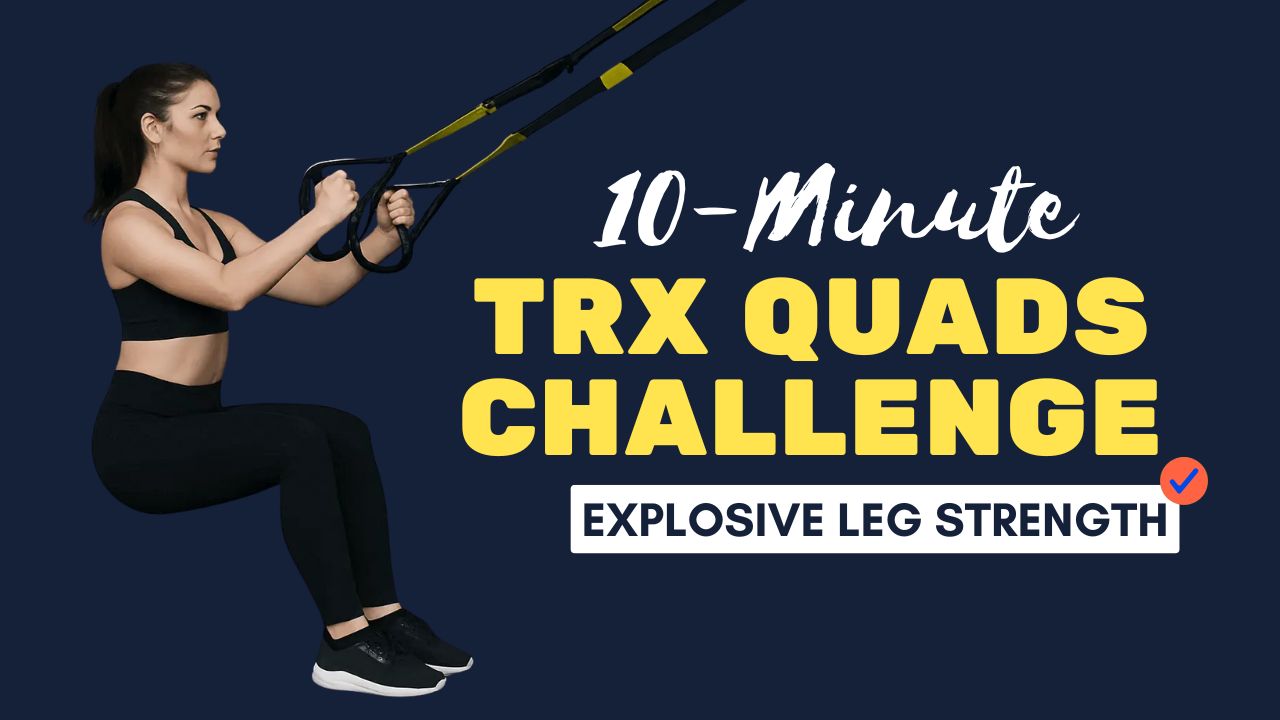Your quads are among the largest and most powerful muscles in your body, and training them effectively not only shapes your legs but also improves overall strength, mobility, and athletic performance.
Did you know that strong quadriceps play a critical role in protecting your knees and enhancing your balance?
Despite being one of the most targeted muscles in fitness, many people don’t train their quads correctly, often relying on leg machines or improper form that limits growth and strength gains.
This 21-day Barbell Quads Challenge is designed to sculpt, strengthen, and tone your thighs using only a barbell.
Whether you are a beginner or an intermediate lifter, following this plan with correct form will help you see visible results and improve your lower-body power. Here’s a deep dive into the exercises, their benefits, and how to perform them safely.
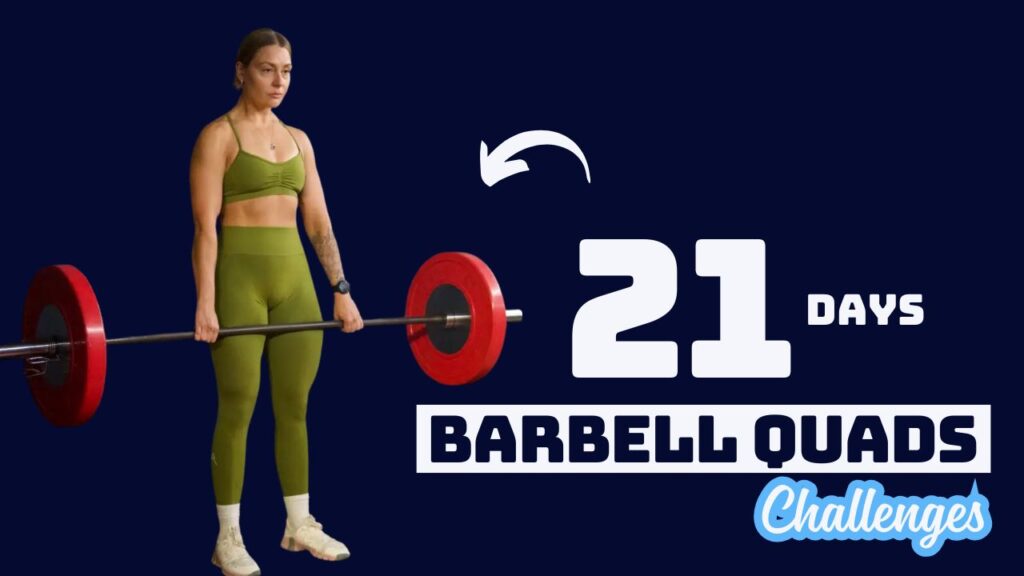
Table of Contents
What Can Happen After 30 Days of the 21-Day Barbell Quads Challenge
| Area | Possible Results |
|---|---|
| Muscle Strength | Noticeably stronger quadriceps and improved lower-body power. |
| Muscle Tone | More defined and sculpted quads, with enhanced leg shape. |
| Endurance | Increased muscular endurance, allowing more reps and sets without fatigue. |
| Balance & Stability | Improved balance and coordination due to single-leg exercises like lunges and Bulgarian split squats. |
| Posture | Better posture and core stability from maintaining proper form during squats and lifts. |
| Knee Support | Stronger quads help protect and stabilize knees during daily activities and sports. |
| Fat Reduction | Possible reduction in thigh fat when combined with a proper diet and cardio. |
| Confidence | Enhanced confidence in performing leg-intensive exercises and overall workouts. |
| Mobility | Improved hip and ankle flexibility from repeated squatting and lunging movements. |
| Motivation | A sense of accomplishment, inspiring continuation of lower-body and full-body strength routines. |
Do’s & Don’ts for the 21-Day Barbell Quads Challenge
| Do’s | Don’ts |
|---|---|
| Warm up properly before each workout to prevent injury. | Skip warm-ups or stretch cold muscles. |
| Focus on proper form rather than lifting heavier weights. | Sacrifice technique for heavier loads. |
| Use progressive overload by gradually increasing weight or reps. | Stay stagnant with the same weight without challenging your muscles. |
| Keep your core engaged during all exercises to support your lower back. | Arch your back or lean excessively during squats and lunges. |
| Rest adequately between sets and on designated rest days. | Overtrain without giving muscles time to recover. |
| Maintain a balanced diet to support muscle growth and recovery. | Rely solely on workouts without proper nutrition. |
| Track your progress to stay motivated and monitor improvements. | Ignore your progress or fail to adjust weights as needed. |
| Breathe properly – inhale on lowering phase, exhale on lifting phase. | Hold your breath throughout exercises. |
| Use a sturdy surface for step-ups and Bulgarian split squats. | Perform exercises on unstable surfaces that may cause falls. |
| Listen to your body; modify exercises if you feel pain. | Push through sharp pain or discomfort that could lead to injury. |
Exercises For Barbell Quads Challenge
1. Barbell Back Squat
Description: The barbell back squat is a foundational movement that engages the quads, glutes, hamstrings, and core. Squats improve lower-body strength, functional fitness, and muscle endurance.
How to Perform:
- Position a barbell on your upper back, just below the neck, gripping it comfortably.
- Stand with your feet shoulder-width apart and toes slightly outward.
- Brace your core, keep your chest up, and slowly squat down by bending your knees and pushing your hips back.
- Go down until your thighs are at least parallel to the ground or lower if mobility allows.
- Push through your heels to return to the starting position, fully extending your knees.
- Repeat for the prescribed number of reps.
Tips: Avoid letting your knees cave inward. Keep weight balanced over your heels and mid-foot.
2. Front Squat
Description: The front squat shifts the load to the front of your shoulders, putting greater emphasis on the quads and upper back. It’s excellent for building thickness in the front of the thighs.
How to Perform:
- Clean the barbell to rest on your shoulders, crossing your arms or using the clean grip to stabilize it.
- Stand with feet shoulder-width apart.
- Maintain an upright torso, chest lifted, and elbows pointing forward.
- Lower into a squat until your thighs are parallel to the floor.
- Press through your heels and extend your knees to return to the starting position.
Tips: Keeping your torso upright prevents undue stress on your lower back.
3. Bulgarian Split Squat
Description: This single-leg exercise isolates the quads while improving balance, coordination, and unilateral leg strength.
How to Perform:
- Stand a few feet in front of a bench or elevated surface, holding a barbell on your upper back.
- Place your rear foot on the bench behind you.
- Lower your body by bending your front knee, keeping your chest upright and core engaged.
- Descend until your front thigh is parallel to the ground.
- Push through your front heel to return to the starting position.
- Repeat on both legs.
Tips: Focus on a controlled movement rather than using momentum.
4. Barbell Step-Ups
Description: Step-ups target quads, glutes, and hamstrings while also improving functional leg strength and knee stability.
How to Perform:
- Hold a barbell across your upper back.
- Stand facing a sturdy bench or platform.
- Step onto the platform with your right leg, pressing through the heel.
- Bring your left leg up and stand tall on the platform.
- Step down slowly and switch legs.
- Repeat for the desired number of reps.
Tips: Avoid pushing off the back leg too much; the front leg should do most of the work.
5. Barbell Hack Squat
Description: This variation places a strong emphasis on the quads and can be performed with a barbell without a machine. It helps build the outer and inner quads.
How to Perform:
- Stand with feet shoulder-width apart, holding a barbell behind your legs with an overhand grip.
- Keep your back straight and core tight.
- Squat down, bending at the knees and hips, lowering the barbell toward the floor.
- Push through your heels to return to a standing position.
Tips: Keep the barbell close to your legs to maintain control and balance.
6. Barbell Walking Lunge
Description: Walking lunges improve quad strength, glute development, and coordination, while also enhancing flexibility in the hips.
How to Perform:
- Place a barbell across your shoulders.
- Step forward with your right leg and lower your body until both knees are at 90-degree angles.
- Push through the front heel to step forward with the left leg.
- Continue walking forward for the prescribed reps.
Tips: Take controlled steps to avoid knee strain. Keep your torso upright throughout the movement.
7. Barbell Sumo Squat
Description: This wide-stance squat variation targets the inner quads and adductors, giving a fuller leg development.
How to Perform:
- Hold a barbell across your upper back.
- Position your feet wider than shoulder-width with toes pointing outward.
- Squat down while keeping your chest up and knees aligned with toes.
- Lower until thighs are parallel to the ground, then push back up.
Tips: Avoid letting knees collapse inward; keep them aligned with your toes.
8. Barbell Split Squat with Pause
Description: A variation of the Bulgarian split squat, pausing at the bottom increases time under tension and boosts quad growth.
How to Perform:
- Position the rear foot on a bench and hold a barbell on your back.
- Lower slowly into a split squat position.
- Pause for 2–3 seconds at the bottom.
- Press through the front heel to return to standing.
Tips: The pause ensures maximal activation of the quads.
9. Barbell Thrusters
Description: Thrusters combine a squat and overhead press, engaging the quads dynamically and improving overall lower- and upper-body strength.
How to Perform:
- Hold a barbell at shoulder height with an overhand grip.
- Perform a full squat, keeping your torso upright.
- Explosively press the bar overhead as you stand.
- Lower the bar back to your shoulders and repeat.
Tips: Focus on smooth, controlled movements to avoid joint strain.
10. Barbell Pause Squat
Description: Similar to the back squat but pausing at the bottom increases muscle tension and improves strength through the sticking point.
How to Perform:
- Set the barbell on your upper back.
- Squat down until thighs are parallel to the ground.
- Pause for 2–3 seconds while maintaining tension in the quads.
- Push through your heels to stand up.
Tips: Keep your core engaged to protect your lower back.
21-Day Workout Challenge Routine
| Day | Exercise | Reps & Sets |
|---|---|---|
| 1 | Barbell Back Squat, Barbell Front Squat, Barbell Walking Lunge | 12-15 reps, 3 sets each |
| 2 | Barbell Step-Ups, Bulgarian Split Squat, Barbell Hack Squat | 10-12 reps, 3 sets each |
| 3 | Rest | – |
| 4 | Barbell Back Squat, Barbell Front Squat, Barbell Pause Squat | 12-15 reps, 3 sets each |
| 5 | Barbell Thrusters, Barbell Sumo Squat, Bulgarian Split Squat | 10-12 reps, 3 sets each |
| 6 | Barbell Step-Ups, Barbell Walking Lunge, Barbell Pause Squat | 12 reps, 3 sets each |
| 7 | Rest | – |
| 8 | Barbell Back Squat, Barbell Front Squat, Barbell Hack Squat | 12-15 reps, 3 sets each |
| 9 | Barbell Thrusters, Bulgarian Split Squat, Barbell Step-Ups | 10-12 reps, 3 sets each |
| 10 | Rest | – |
| 11 | Barbell Back Squat, Barbell Front Squat, Barbell Walking Lunge | 12-15 reps, 3 sets each |
| 12 | Barbell Sumo Squat, Barbell Pause Squat, Bulgarian Split Squat with Pause | 10-12 reps, 3 sets each |
| 13 | Rest | – |
| 14 | Barbell Thrusters, Barbell Step-Ups, Barbell Hack Squat | 12 reps, 3 sets each |
| 15 | Barbell Back Squat, Barbell Front Squat, Barbell Walking Lunge | 12-15 reps, 3 sets each |
| 16 | Bulgarian Split Squat, Barbell Pause Squat, Barbell Sumo Squat | 10-12 reps, 3 sets each |
| 17 | Rest | – |
| 18 | Barbell Thrusters, Barbell Step-Ups, Barbell Hack Squat | 12 reps, 3 sets each |
| 19 | Barbell Back Squat, Barbell Front Squat, Bulgarian Split Squat | 12-15 reps, 3 sets each |
| 20 | Barbell Walking Lunge, Barbell Pause Squat, Barbell Sumo Squat | 10-12 reps, 3 sets each |
| 21 | Challenge Day: All exercises in a circuit | 10 reps each, 2 rounds |
Conclusion & Next Steps
Completing the 21-Day Barbell Quads Challenge is just the beginning of stronger, toned legs. By consistently following this plan, you not only develop well-defined quadriceps but also improve overall lower-body strength, balance, and stability. Remember, progress comes from a combination of proper form, gradual weight increase, and consistency.
Once you finish this 21-day challenge, consider continuing your progress with advanced variations: you can increase weight on the barbell, add resistance bands for extra tension, or combine these exercises into a full lower-body circuit 2–3 times per week.
Another option is to extend the challenge for another 3–4 weeks, progressively increasing reps or sets each week. You can also integrate complementary exercises like Romanian deadlifts or hip thrusts to target glutes and hamstrings while keeping quads strong.
The key is to stay consistent and challenge your muscles progressively. Your legs will not only look stronger and more toned, but you’ll also notice improved endurance and power in daily activities and athletic movements. Take what you’ve learned in these 21 days and build a sustainable, long-term leg-strength routine that keeps you motivated and injury-free.
Frequently Asked Questions (FAQs)
Who is this 21-day barbell quads challenge suitable for?
This challenge is suitable for beginners, intermediate, and advanced lifters. Beginners should start with lighter weights and focus on proper form, while advanced lifters can increase load and intensity.
How often should I do these workouts?
The plan is structured to include 3–4 workout days per week, with rest days for recovery. Rest is crucial to prevent injury and allow muscles to grow.
Can I do this challenge at home?
You can do it at home if you have a barbell and adequate space. Make sure the floor is stable, and use a bench or sturdy surface for exercises like Bulgarian split squats and step-ups.
How much weight should I use?
Choose a weight that challenges your muscles but allows you to maintain proper form. For beginners, a lighter barbell is ideal, while experienced lifters can progressively increase weight.
Will this challenge help me lose leg fat?
While the exercises build and tone your quads, fat loss depends on overall diet and calorie expenditure. Combining this challenge with cardio and a healthy diet will yield better fat-loss results.
Can I modify the exercises if I have knee issues?
Yes. Reduce depth in squats or replace high-impact movements with low-impact alternatives. Always consult a doctor or physiotherapist before starting a new program if you have joint concerns.
How long before I see results?
Visible results vary depending on your fitness level, diet, and consistency. Many participants notice improved strength and muscle tone within 3–4 weeks.
Should I increase the weight each week?
Gradually increasing the weight or reps helps maintain progressive overload, which is essential for muscle growth and strength gains.
Can I combine this challenge with other workouts?
Yes. You can combine this challenge with upper-body workouts, cardio, or flexibility training, but ensure you allow sufficient recovery for your quads.
What if I miss a day?
Missing a day isn’t a problem. Simply continue with the next scheduled workout. Avoid skipping multiple days in a row to maintain consistency and progress.
